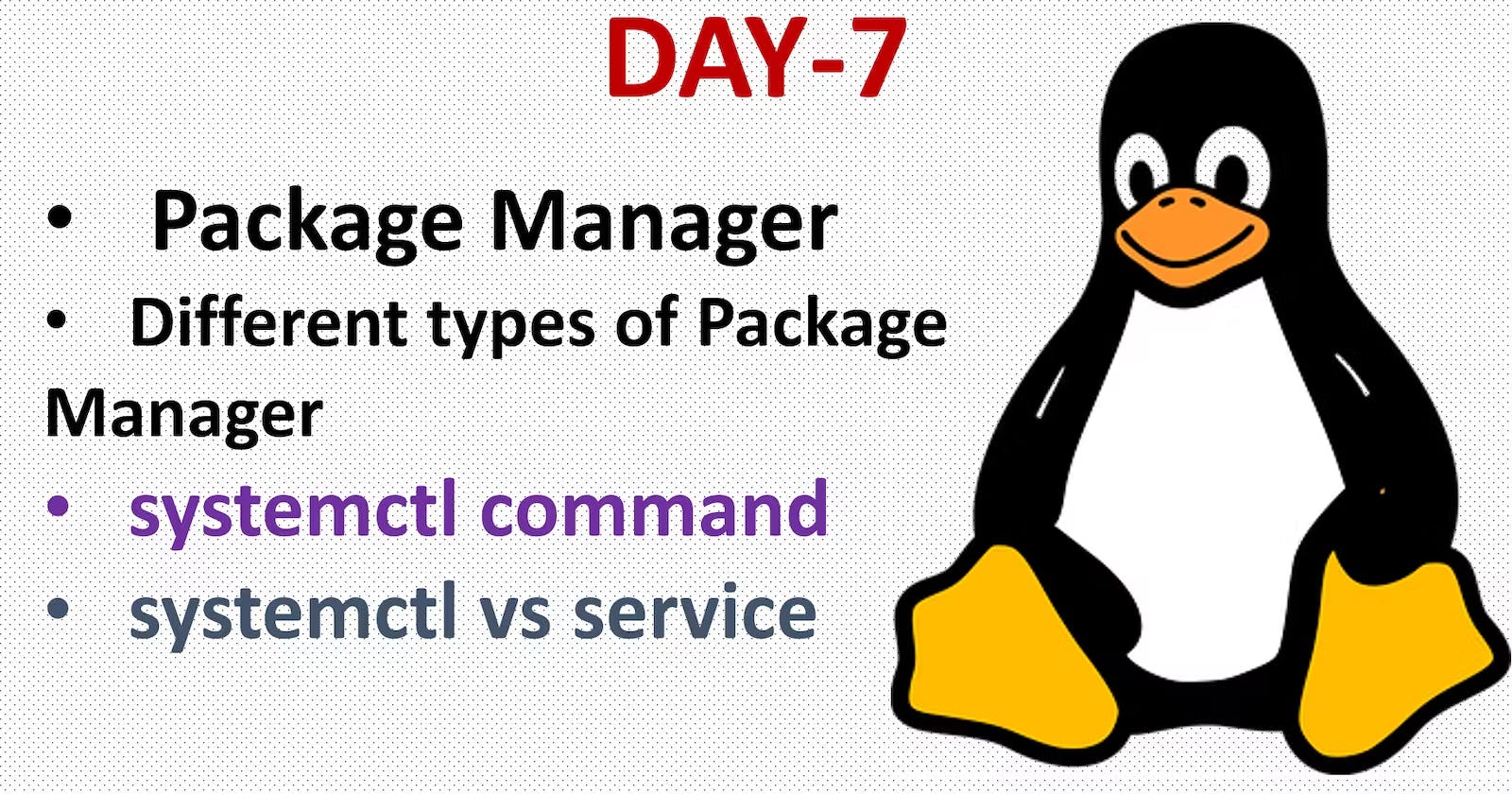What is a package manager in Linux?
- A package manager is a tool that allows users to install, remove, upgrade, configure, and manage software packages on an operating system. The package manager can be a graphical application like a software center or a command line tool like apt-get or yum. To understand a package manager, you must understand what a package is.
What is a package?
- A package is usually referred to as an application but it could be a GUI application, command line tool, or a software library (required by other software programs). A package is essentially an archive file containing the binary executable, configuration file, and sometimes information about the dependencies.
Different kinds of package managers
Package Managers differ based on the packaging system but the same packaging system may have more than one package manager.
For example, RPM has Yum and DNF, package managers. For DEB, you have apt-get aptitude command, line-based package managers.
Install docker and Jenkins in your system from your terminal using package managers.
Docker installation :
Update your system packages by running the following command:
sudo yum updateInstall Docker:
sudo yum install docker(if docker is present in your system it will install or you have to setup the repository and dependency, for more details. https://docs.docker.com/engine/install/rhel/ )
Verify that the Docker installation is successful.
which dockerdocker --version
Start the Docker service:
sudo systemctl start dockerVerify that Docker is running correctly by running the following command:
sudo docker run hello-world
Downloading and installing Jenkins
Ensure that your software packages are up to date on your instance
sudo yum update -yAdd the Jenkins repo using the following command:
sudo wget -O /etc/yum.repos.d/jenkins.repo \https://pkg.jenkins.io/redhat-stable/jenkins.repoImport a key file from Jenkins-CI to enable installation from the package:
sudo amazon-linux-extras install java-openjdk11 -yInstall Java (Amazon Linux 2023):
sudo yum install java-11-amazon-corretto -yInstall Jenkins:
sudo yum install jenkins -yEnable the Jenkins service to start at boot:
sudo systemctl enable jenkinsStart Jenkins as a service
sudo systemctl start jenkinsYou can check the status of the Jenkins service using the command:
sudo systemctl status jenkinsunlock Jenkins
sudo cat /var/lib/jenkins/secrets/initialAdminPassword

What are systemctl and systemd?
systemctlandsystemdare tools used in modern Linux systems to manage system services and processes.systemdis a system and service manager for Linux operating systems. It is responsible for starting up and managing system services, handling power management, and performing many other tasks that were traditionally handled by theinitprocess.systemdis designed to provide a more reliable and efficient system startup and management experience.systemctlis the command-line interface for interacting with thesystemdsystem and service manager. It allows you to manage and control the state of system services, including starting, stopping, restarting, enabling, and disabling them. You can also usesystemctlit to view the status of services and get information about service dependencies and logs.With
systemctl, you can easily manage and troubleshoot system services, monitor system health, and perform a variety of other administrative tasks.systemdandsystemctlare widely used in modern Linux distributions and are an important part of the Linux ecosystem.
check the status of the docker service in your system
sudo systemctl status docker
stop the service Jenkins and post before and after screenshots
Before
sudo systemctl status jenkins
After
sudo systemctl stop jenkinssudo systemctl status jenkins
Read about the commands systemctl vs service
systemctlandserviceare both command-line tools used for managing services in Linux systems. However, there are some differences between the two.systemctl
service
systemctl is a more modern and powerful command that is used in newer Linux distributions. It is used to manage the systemd system and service manager, which replaces the traditional init system. systemctl can perform the same tasks as the service, but it has additional functionality and features, such as the ability to view the status of a service, enable or disable a service at boot time, and more.
service is a legacy command that is still used in many Linux distributions. It is used to manage the system services by starting, stopping, restarting, or reloading them. It works by executing scripts located in the /etc/init.d directory.
For example, if you want to start the Apache web server using systemctl, you would run the following command:
sudo systemctl start apache2For example, if you want to start the Apache web server using the service, you would run the following command:
sudo service apache2 startAdditionally,
systemctlhas a number of subcommands that allow you to perform more advanced tasks, such as listing all running services, checking the status of a service, or getting information about a service's configuration.Overall, while
serviceis still supported in many Linux distributions,systemctlprovides a more advanced and flexible way to manage services and is the preferred method in many modern Linux systems.
